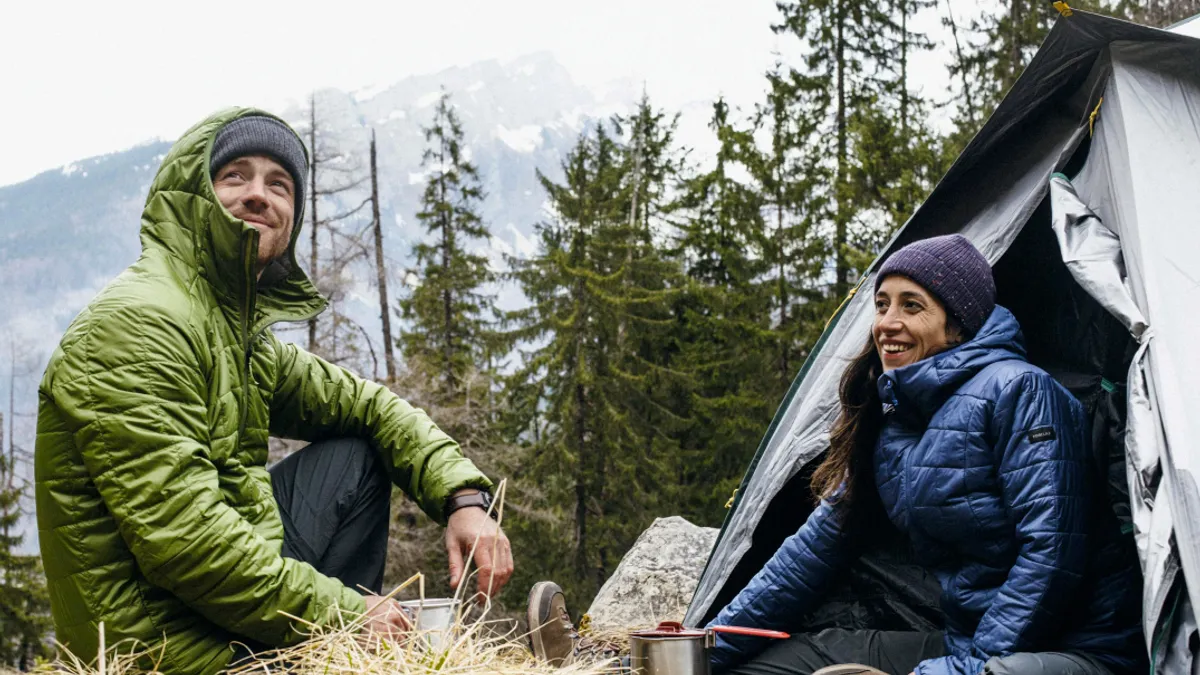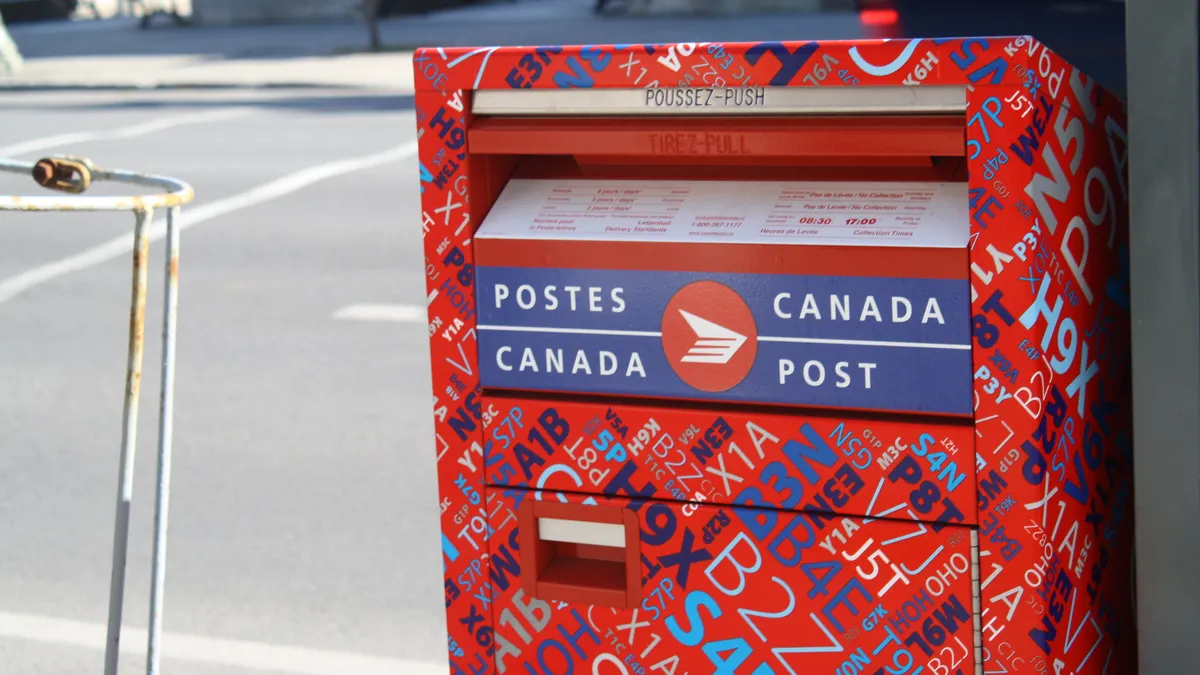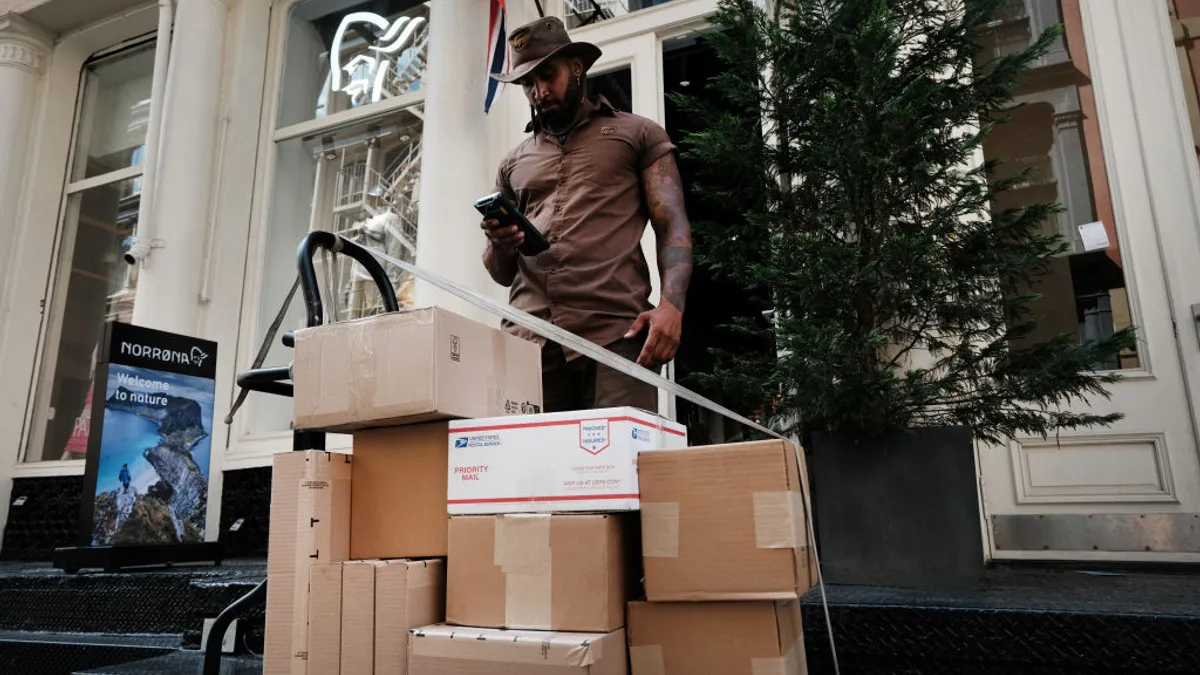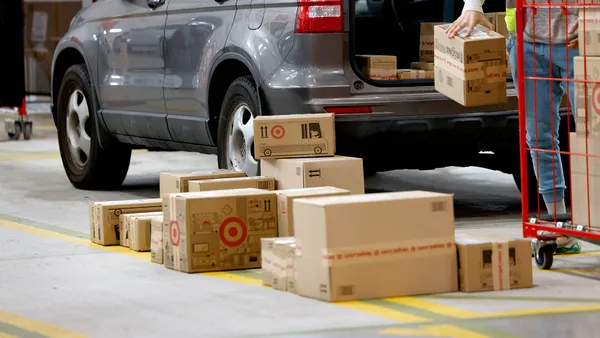French sporting goods giant Decathlon may not yet be a household name in the U.S., but it has every intention of becoming one.
One piece of Decathlon's success equation is its supply chain. In Europe and much of the world, the company controls every aspect, from product conception to design to retail. This vertical approach is much of what allows it to produce its famous $10 backpacks, $30 puffy coats and popular "two-second," $60 tents.
While the winning prices carry over to the company's three San Francisco Bay Area retail stores and U.S.-based online sales, one difference here is the structure of the supply chain. With only one, 47,000-sq. ft. distribution center in Oakland, and suppliers from Asia and Europe, lead times are a bit longer than elsewhere in the world. "Compared to Europe, the Bay Area is remote," Sophie O'Kelly de Gallagh, COO of Decathlon USA, told Supply Chain Dive. "So we are considering all of our routes from Europe and Asia and determining lead times, trade tariffs and other factors to keep the expense as low as possible."
"Compared to Europe, the Bay Area is remote."

Sophie O'Kelly de Gallagh
COO of Decathlon USA
Lead times from Europe can be as long as two months, says de Gallagh. From China, the potential exists to reduce that to two weeks, so increasing shipments from that direction is a strategy very much under consideration where possible, she says.
As Decathlon works through the sourcing and shipping optimization, it is also looking at forecasting.
Unlike many companies, Decathlon entered the U.S. market with retail and online sales simultaneously, presenting its own challenges. The American consumer has a unique set of buying habits as well, something the company is working to identify in detail.
All of this leads to a heavy focus on proper forecasting, says de Gallagh. "We are using an integrated SAP software system plus a qualified team to analyze our needs," she said. "Our big focus is on store replenishment at the moment, because U.S. customers like to feel and touch products before buying, so we need to ensure the shelves are stocked."
Susan Rider, supply chain consultant and president of Rider & Associates, told Supply Chain Dive forecasting is especially essential for the online side of the business. "Online ordering is really tough to predict," she said. "There are multiple examples of companies getting this wrong and paying for it. An online shoe retailer, for instance, predicted 5,000 orders its first holiday season and ended up with twice that, putting them completely underwater."
Setting up distribution centers for success
Brian Chan, a product manager at New Jersey-based Unex Manufacturing, told Supply Chain Dive that with information in hand, order fulfillment can be optimized by a proper distribution center floor layout. "If you look at the fastest moving items, the ones you sell every day, it's wise to put them closest to the shipping dock," he said. "Then consider how you get those items to door — with a carousel? Standard shelving plus carts?"
"Set up the software to ensure out-of-season products and slow- to-medium movers are farther back in the DC."

Brian Chan
Product manager at Unex Manufacturing
With slower moving items, Chan said, it's key to keep them out of the way of the more popular inventory. "Set up the software to ensure out-of-season products and slow- to-medium movers are farther back in the DC."
This is where collecting historical data comes into play, once Decathlon has enough time in the U.S. market to compile it. As for online sales, which de Gallagh expects to eventually become the larger percentage of the business, Chan sees speed of delivery as important, but not a deal-breaker. "Decathlon's biggest U.S. competitor isn't going to be Amazon," he said. "So when you look at something comparable like a Backcountry.com, you're competing with a two-day delivery and free shipping."
Scaling up
Rider said that while Decathlon is focused on its short-term goals of perfecting its Bay Area store operations before scaling, it needs a long-term vision. "Many companies in their situation work with a third-party logistics provider while they establish their footprint," she continued. "Finding a trusted partner in the United States could help them grow."
In Asia Decathlon partners with DHL, which oversees the companies air, sea and road shipments from factories in Vietnam and Taiwan to the rest of the world. De Gallagh said no such partnership is planned as of now for the U.S., but the company hasn't ruled it out, either. "We handle logistics internally at this point," she said. "In general, being fully integrated across all our channels allows us to realize cost savings that we then pass on to our customers."
In the future, should the company be satisfied enough with its West Coast operations that it begins looking to roll out stores across the country, additional warehouse locations will likely need to come into play, said Rider. "It's hard to service the East Coast from the West in a timely fashion," she said. "Almost every company faces pain points along the way and this could be theirs."
De Gallagh said that if, or when, the company looks to add other warehouses, the biggest areas of consideration will be ports of entry, online shipping percentages, and where the best locations are for getting product into additional stores and consumer's hands.
Chan predicts a successful future for Decathlon in the United States should it maximize its supply chain strategy. "They have the advantage of selling their own products instead of relying on outside brands," he said.
This story was first published in our weekly newsletter, Supply Chain Dive: Operations. Sign up here.






















